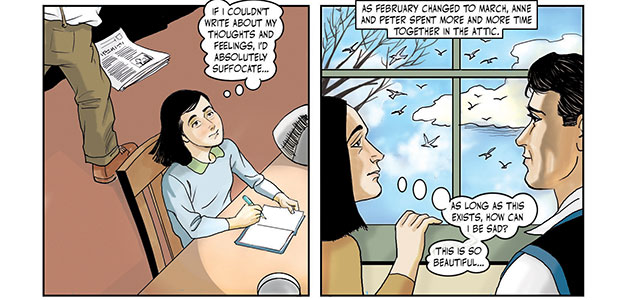When my family went to Europe five years ago to visit our son who was studying in Germany, one of the most profound things we did was visit the Anne Frank house where she and her family hid from the Nazis. One of the things that really stood out to my wife was the fact that the apartment was above a jam warehouse, something Anne never saw fit to mention. As a teenage girl being forced into hiding, she was far more interested in Peter, the teen boy who also was hiding there, or fighting with her mother. She really wasn’t interested in the jam that was stored below her.
Anne Frank and her famous diary have been back in the news for a couple of reasons. One is that there is a new graphic novel-style biography out that is based in large part on her diary, but also on resources that both come before and after the time period covered by it. (Well, it came out in 2010, and my link is to 2011, but I just found out about it and have been seeing recent links to it….) The book is the product of the two writer/artists who did the graphic novel treatment of the 9/11 commission report. Ernie Colón and Sid Jacobson are veterans of the comics business, having worked on Casper the Friendly Ghost, Incredible Hulk, Richy Rich and Amazing Spider-Man.
Colón had this to say to Smithsonian Magazine about working on the book:
“The impact was just tremendous, because you really get to like this kid,” he says. “Here she is, persecuted, forced to hide and share a tiny room with a cranky, middle-aged man. And what was her reaction to all this? She writes a diary, a very witty, really intelligent, easy-to-read diary. So after a while you get not just respect for her, but you really feel a sense of loss.”
Anne Frank’s diary was also in the news recently because a a Michigan school district that refused to remove a new edition of the diary from a middle school reading option list. The edition of Diary of a Young Girl that many of us read in school was an edited version that omitted several elements, including Anne saying mean things about her mother as well as discussing her exploration of her sexuality. It was the sexuality part that drew the biggest criticism from the mother, who objected to the passage where Anne writes about her vagina. Her complaints were similar to those from a Virginia school district back in 2010.


Pingback: Remembering Anne Frank – How her story lives on long after her death | Living in a Media World